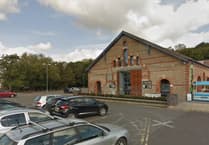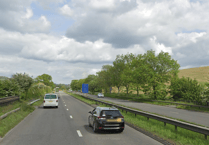For birds on the red list of endangered species our Swifts, against all odds, have done very well in 2023.
In lower parts of East Harptree, where Swift nesting numbers are monitored, numbers were down, but in the higher regions of the village they were much higher, a delight to see. If we look at Mark Glanville, our swift man’s house in Bristol, (www.bristolswifts.co.uk) the growing count of nests eventually occupied rose to last year’s level, with a count of 38 chicks on 13th July, a phenomenal success.
In late April swift followers were on tenterhooks as blasts of northerly gales constantly hindered progress out of Africa.
Breeding birds, however, driven by hormones to make it to their nests, finally began arriving in dribs and drabs.
In cold and windy days their behaviour was muted but adequate numbers were spotted over the lake, an especially good feeding ground later when insect numbers were once again down in the long drought.
Swifts in our region were not visually seen in the same numbers as usual and people thought that they were not there but, often in small and often silent groupings they were.
In Chew Magna they were occasionally seen in the centre of the village and along the High Street. Much to my surprise I saw four swifts on occasion wheeling around at the west end of the village around my home.
Because our iconic swifts are endangered and many must have died in the process of trying to battle their way north to us this year, they need our help and that is what we try to do.
This season, starting end of April, is practically over and next year we will redouble our efforts to attract them to our nest boxes. It took Mark Glanville five years of playing swift calls to attract his first birds.
It may or may never happen with us, but with enthusiasm and effort we hope it will.
Please send us your sightings of swifts in our villages and in or near our gardens to: [email protected].
Thank you for your continued efforts.





Comments
This article has no comments yet. Be the first to leave a comment.